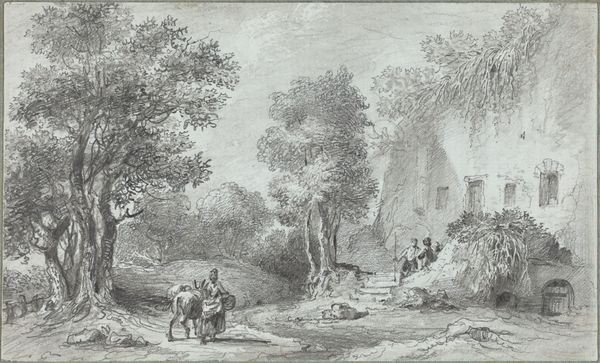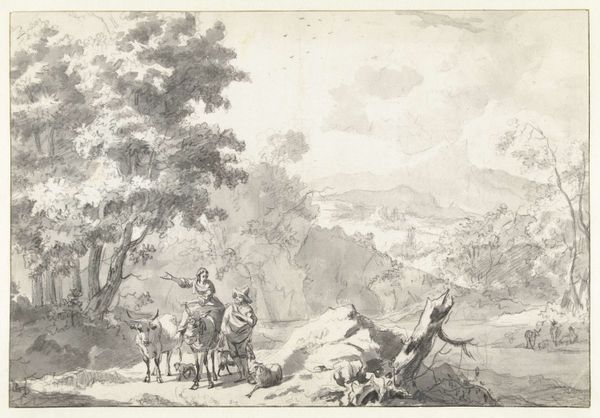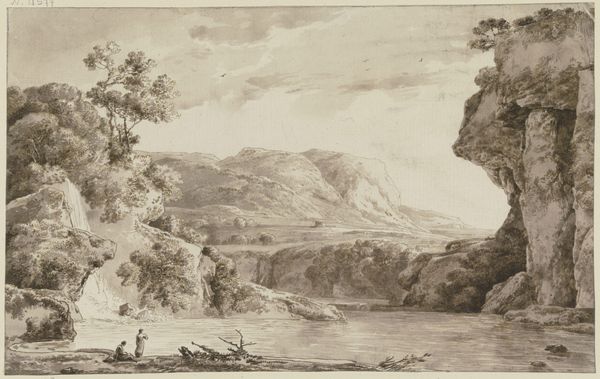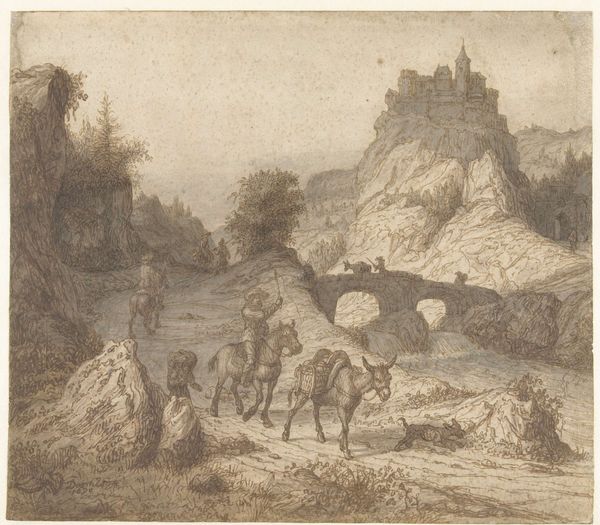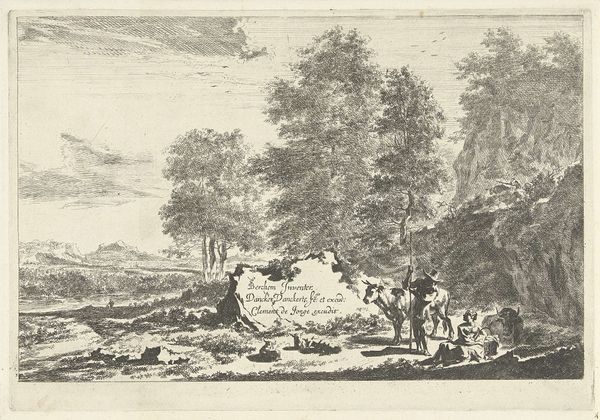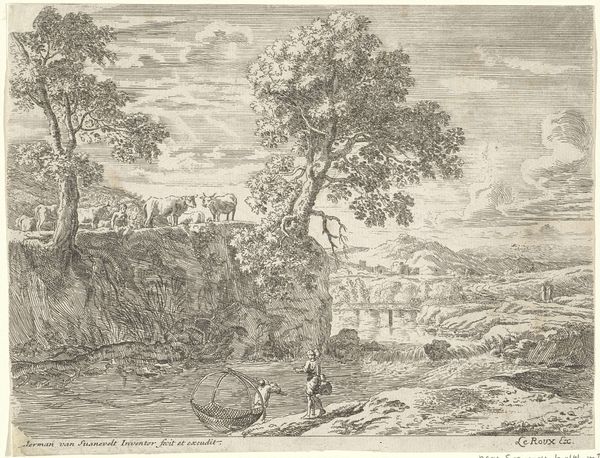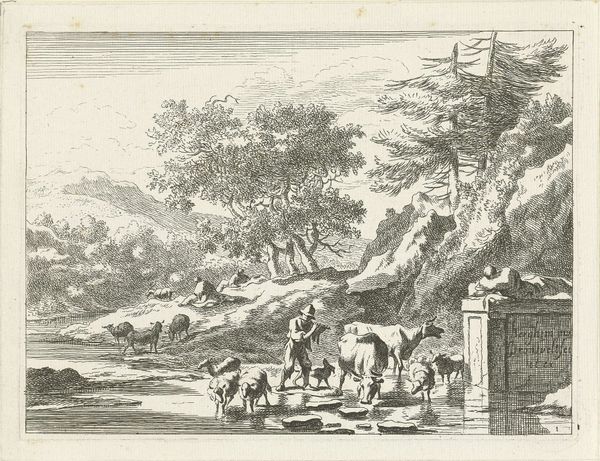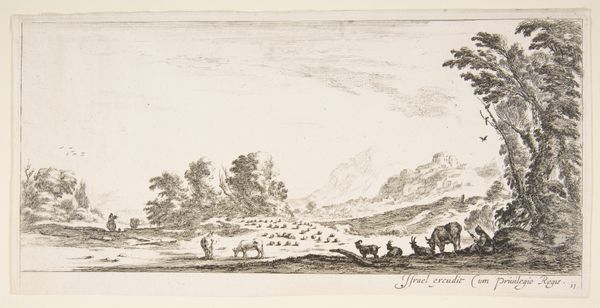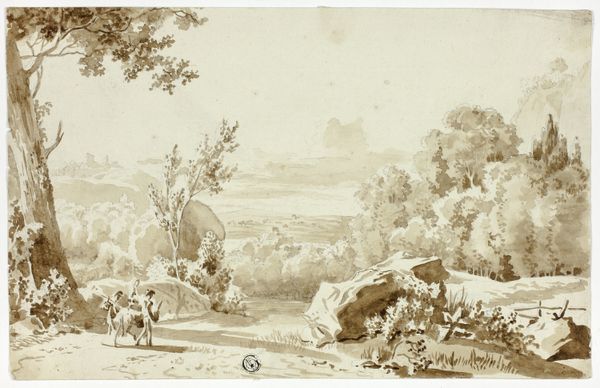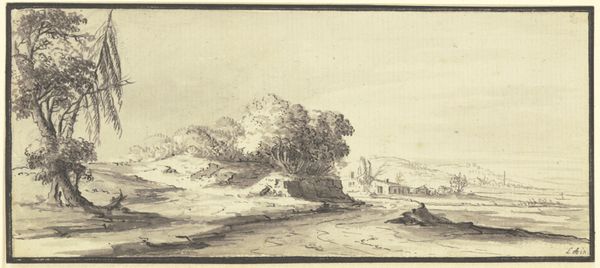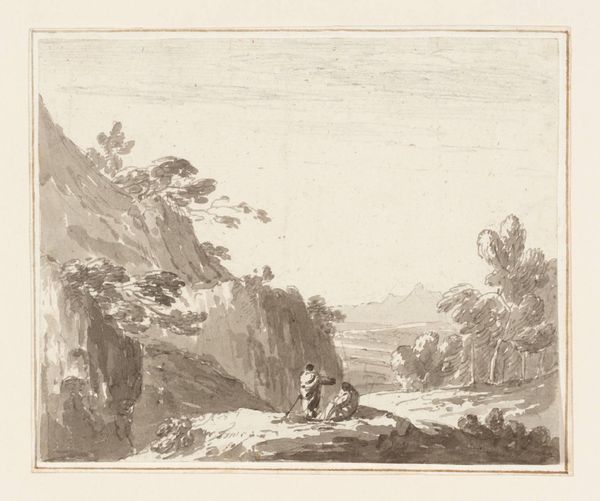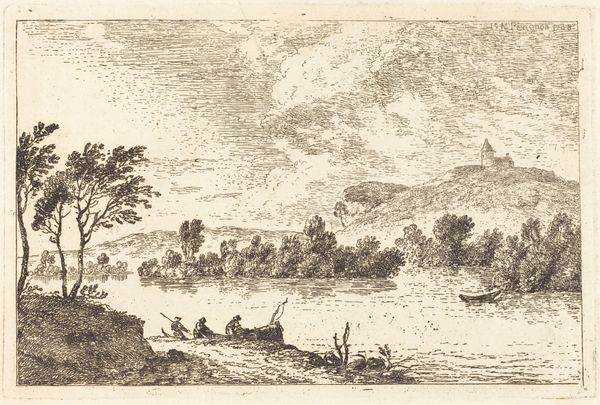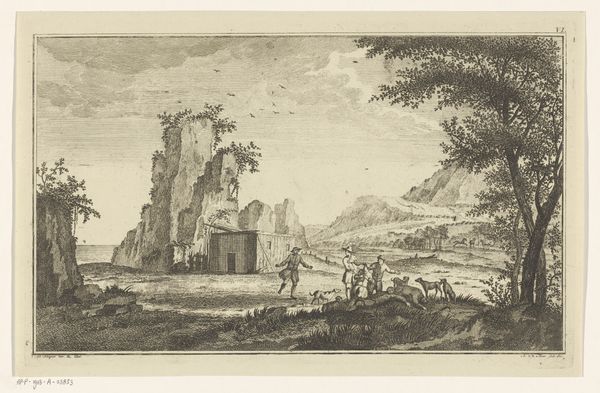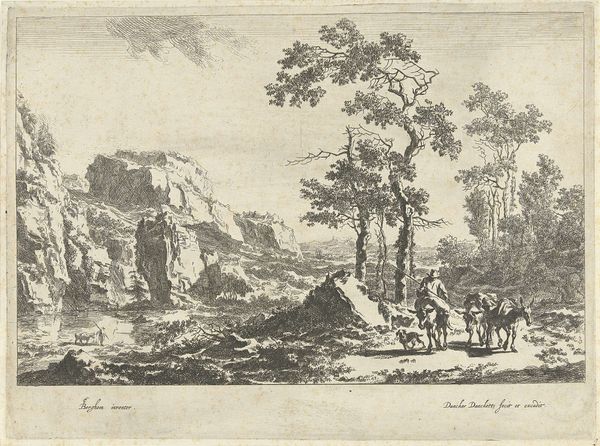
Fårehyrde og fiskere i et sydlandsk flodlandskab 1635 - 1664
0:00
0:00
drawing, pencil
#
drawing
#
baroque
#
landscape
#
pencil
#
genre-painting
Dimensions: 141 mm (height) x 213 mm (width) (bladmaal)
Editor: So, this is Nicolaes Berchem’s "Fårehyrde og fiskere i et sydlandsk flodlandskab," which translates to "Shepherd and Fishermen in a Southern River Landscape." It’s a pencil drawing, placing it sometime between 1635 and 1664. There's this hazy, almost dreamlike quality to the whole thing. What strikes you most about this piece? Curator: Immediately, I'm drawn to the materials: pencil on paper. Berchem is depicting labor, both shepherding and fishing, using readily available and relatively inexpensive means. This elevates the everyday. What kind of paper was it, and how might its availability affected access to artistic expression? Was it mass-produced, or handmade? This is a good starting point, to wonder who was making art, for whom, and how widely it was consumed. Editor: I hadn't really considered the paper itself! I suppose I was focused on the composition, the way he layers the landscape. Curator: But the layering, the haze – those are results of technique, decisions made with and often *because* of the chosen medium. Consider how the cost of pigments for paintings at the time might have restricted who could portray these scenes. Pencil democratizes this imagery. The paper and the ease with which pencil lines are rendered emphasize this. Is Berchem commenting on class, perhaps? Editor: That's a fascinating perspective. It definitely makes me reconsider the power dynamics in the image. Before, I saw a peaceful scene of co-existence. Curator: And consider the act of drawing itself. A preparatory sketch, a study? Or a final product, challenging the hierarchy of finished painting versus preliminary work? The scale of production also plays in this – who could afford artwork at the time? Drawing was in high circulation during the artist’s time, wasn't it? Editor: I suppose I hadn't seen drawing itself as making a statement about...accessibility and value. Curator: Exactly. And this makes one wonder. How would art materials and processes play into our reading and understanding of an artwork's intentions? Editor: I’ll definitely be thinking more about materials from now on!
Comments
No comments
Be the first to comment and join the conversation on the ultimate creative platform.
